Cut out header and cripple studs over bathtub. Questions on home built in 1955.
1955 rancher in central pa. I just found out that plaster and drywall from this period may contain asbestos. Too late now because I already ripped the wall out and shopvacced and carried dropcloths through the house. Looked like a combo of plaster and drywall. I think we’re going to have a certified inspector come to the house and take samples from the bathroom and kitchen materials as well as the air. Am I on the right track? Can someone tell me what materials I have pictured?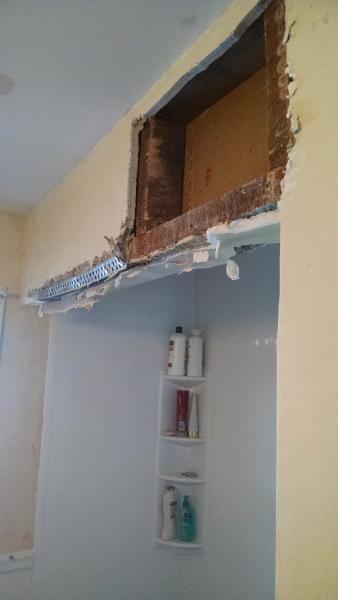 @
@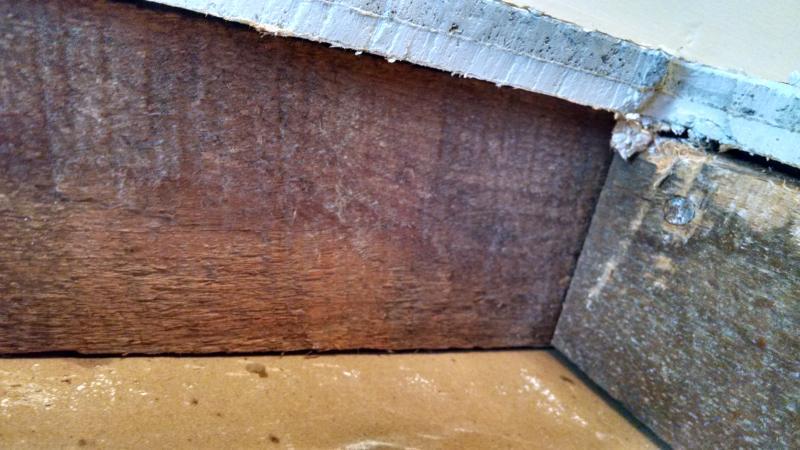
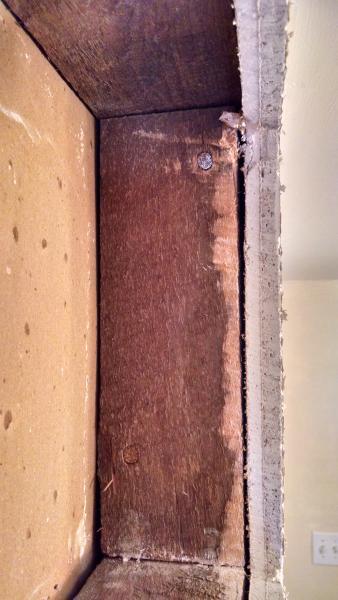
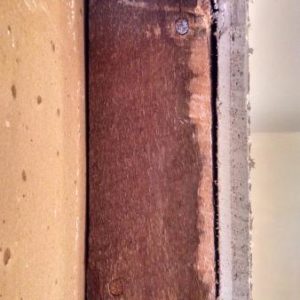
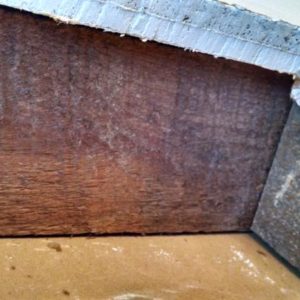
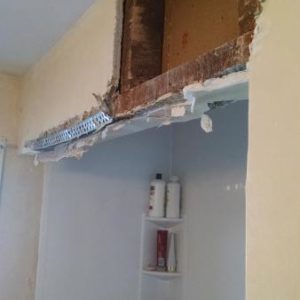
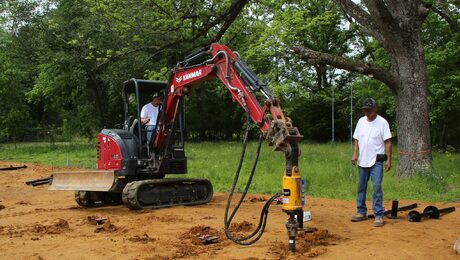

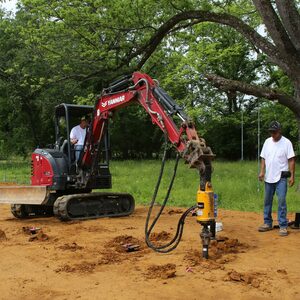
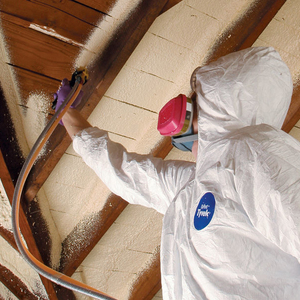















Replies
Greetings
gyp-lath or rock-lath. A substitute for wood lath as a plaster base.
potential for asbestos is possible.
Pre '78 housing has potential for lead based paint finishes as well.
Thanks. I still have metal lath and a part of the header to take out. Should I wet everything down and continue with a fan pulling out the window or should I pay a professional to take care of it? I feel like the people on those fixerupper shows should be talking about asbestos testing more often. They have to be doing that with all those old houses right?
As for the lead paint concern.
The walls in the bathroom have multiple coats of paint that're peeling off the walls after we stripped the wallpaper. You can also see the uneven finish coat of plaster and it looks terrible. There's also scarred wainscotting up on the lower half of the walls that we want to tear out and put up new. I guess I should find out about the asbestos first but, am I better off installing new sheetrock over the plaster?
Like most things, it depends.
Depends on how qualified you are at completing whatever it is you're trying to do. Interestingly, homeowners are not legally required to be RRP certified when disturbing more than 6 squard feet of lead based finishes while working on their pre 1978 homes. They can spread lead dust in and around their homes (and neighborhoods) with nary a legal care in the world. However, if you're concerned about lead dust possibly affecting your family's or your guest's health, then I suggest you research EPA protocals that certified professionals are required to follow and use them. Alternatively, hire a responsible professional that does.
If you were doing this every day, or engaged in a whole-house renovation, more precautions would be merited. But for the limited scope of what you're doing, it's probably fine to just take "reasonable precautions" to control dust, wear a dust mask during actual demolition or other dust-raising activities (yes, I know it's not perfect for asbestos) and then get on with life.
It wouldn't hurt to take some samples to an industrial hygenist for testing, if it's convenient to do so and the prices aren't outrageous (I have no idea what it costs), but unless there is some exceptional situation the information would be unlikely to greatly change your approach.
Your exposure is so minimal...
Not to be too nonchalant, but your exposure to asbestos and lead paint for such a small project is very minimal. Some careful general protections should be adequate (masks, gloves, visqueen off the room, etc). There are guidelines for disposal of the material that you should follow. In our jurisdiction, homeowners are allowed to remove this material. I personally alway recommend tearing it all out. The guidelines for dealing with asbestos on construction projects are designed around contractors and other workers that potentially have many, many exposures over their lifetime. Your exposure during one afternoon of demolition is just not significant.
I was project manager on a small fire station remodel and during the demolition phase we came across some plastered tape around the ductwork joints that was quite likely asbestos. The Contractor's foreman wanted to shut the entire project down, get the tape tested and, if it was asbestos, get the asbestos remove folks out to take care of it. I happened to be lunchtime and, when the workers returned, the tape had all been removed - into a paper grocery bag in the back of my car - saving the Fire Department a couple of thousand dollars and a couple of weeks time.
Had a situation on a Habitat rehab some years back. Myself and the project leader were in the basement of a house that had been moved onto a new foundation. In the basement, up in the 1st floor joists, we spotted a small patch of asbestos cloth stapled to the joist where a flue had run through. We carefully pried it off and buried it in the dirt floor of the basement, where the concrete had not yet been poured.
At our church I spotted an old heating pipe with what was obviously old asbestos insulation on it. The covering had been ripped off over the years. I tried to convince the folks in the office that it needed removing, since the location was a children's classroom, but when they didn't do anything for several weeks I removed it myself and tossed it in the dumptster.
Thanks for all the replies. This thread is turning into an asbestos removal confessional!
We got our air sample results back and its at .oo4 fibres/cc or 2 fibres per 100 fields. So that sounds clean to me but waiting for interpretation from the inspector. He said that either we had no asbestos in the demo materials or I did a really good job containing the dust and cleaning the area.
From what I've read you're breathing .003 to .005 fibres per cc of air outside in urban/suburban areas.
So thanks again for everyone's comments. Any further input is appreciated.
Our full results came back and I talked with the inspector about them. The wallboard and plaster were 80 percent non-fibrous material and 20% cellulose. So no asbestos. Thanks again.
Now, back to tearing our house apart...
You should still wear a mask, of course, if you're raising much dust. Drywall and plaster dust is fairly corrosive to the lungs.
What? Me Worry?
There's no telling.
Considering the positive lack of intrusive codes and nanny state alphabet agencies back then, you may have already been exposed to:
DDT residue, common from pest treatments.
Nuclear residue in fallout from atom bomb tests.
An entire library of no longer allowed fungicides, mildewcides, weed killers, and paint brightners.
The structure may be made of lumber that does not conform to current industry standards.
Heaven alone knows what's hiding behind that snap-in shower enclosure.
Personally, I'd just give in to despair, rool over, and die.
There's another shower behind there. You're reply was not helpful in the least. You've wasted your time typing it and now my time for reading it.
jz
One thing I do on any job where demo is going on to keep dust spreading to a minimum is to turn off the furnace. Air is sucked from most any room to the air returns.
dont remember if I even heard that in the RRP class. Familiarity with the RRP methods should be a must for those tearing into anything of any age. Common sense, but most homeowners paying the bill on a remodel might not think so.
Yet there's more qualified referrals when they don't find that construction dust EVERYWHERE!
.........or so I've been told.
Well I thought it was funny!
I did too... I guess that's the problem with sarcasm in text...
sarcasm.........
Me three, brought a smile and a little chuckle
......
very common to see this in our area. lots of late 40s-60s houses have this. there is a good chance there is asbestos in this material but Im with reno on this one.
damage is done.
if you have done any other work to the house, you have probablly disturbed lead and or asbestos.
minimize the dust by getting a spay bottle and spraying down the exposed edges and areas your going to tear out. dont use a saw just score it and take it down in sections. tape up the door way and have some bags in the bathroom you can fill up with all the debri. get everything cleaned up and in bags before you open up the door... or you could follow the epas guidlines to a t and triple your cost/time (not to mention probablly cause a zombie apocalypse due to lead and asbestos contamination in the mean time)